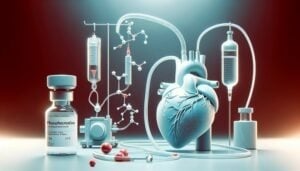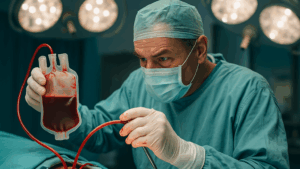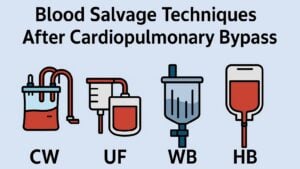This comprehensive review on Extracorporeal Membrane Oxygenation (ECMO) outlines its vital role in critical care, offering a lifeline to patients experiencing severe respiratory or cardiac failure. ECMO is an advanced life-support technique that temporarily assumes the functions of the heart and lungs, allowing for the removal of carbon dioxide and infusion of oxygen directly into the blood. This intervention is particularly crucial when conventional therapies are insufficient.
The historical development of ECMO began in the 1950s, with significant milestones achieved in the 1970s, expanding its applications from neonatal to include pediatric and adult care. ECMO’s role in critical care extends beyond respiratory and cardiac support, proving valuable in managing trauma, sepsis, and post-cardiotomy shock.
The review categorizes ECMO into Veno-Venous (VV-ECMO) for respiratory failure and Veno-Arterial (VA-ECMO) for both respiratory and circulatory support. The broader term, Extracorporeal Life Support (ECLS), encompasses these modalities, emphasizing their essential role in critical care for various conditions.
Indications for ECMO include severe respiratory failure unresponsive to conventional ventilation, cardiac failure, and as a bridge to organ transplantation or recovery. Pre-ECMO assessments involve imaging, echocardiography, laboratory tests, infection screenings, and neurological evaluations to guide optimal initiation and management.
ECMO cannulation, crucial for connecting patients to the circuit, requires precision to optimize blood flow and minimize complications. Anticoagulation and blood management are essential aspects of ECMO care, requiring tailored protocols to balance the risk of bleeding against thrombotic complications. Additionally, the review discusses ECMO-related complications, such as bleeding, thrombosis, infection, hemolysis, and neurological issues, and the importance of continuous monitoring and proactive management to navigate these challenges.
Technological advancements in ECMO, including miniaturization, novel circuit designs, and the integration of remote monitoring and telemedicine, have enhanced its efficacy and accessibility. Portable devices and ambulatory ECMO have transformed patient care, enabling mobility and rehabilitation during treatment. Closed-loop systems and biocompatible materials are other significant innovations improving ECMO’s safety and effectiveness.
The review emphasizes ECMO’s impact on survival rates and quality of life, with varying outcomes based on factors like age, underlying conditions, and ECMO mode. Despite the challenges, ECMO remains a crucial intervention in critical care, with ongoing research and technological developments promising to further its capabilities and improve patient outcomes.
In conclusion, ECMO represents a critical intervention in life-threatening situations, with ongoing advancements enhancing its potential to save lives. Careful patient selection, meticulous management, and technological innovation continue to shape its pivotal role in critical care.







